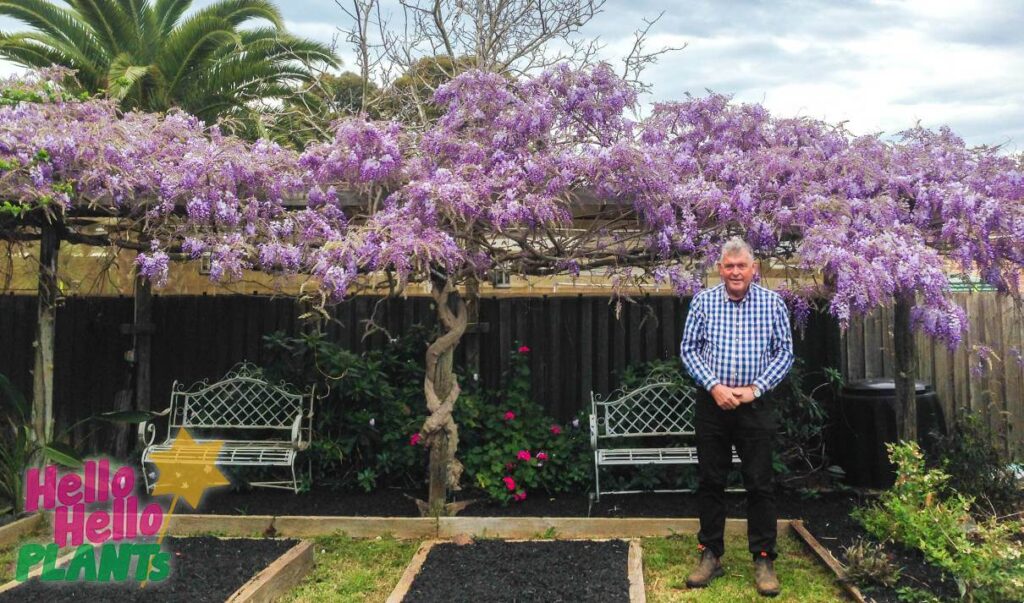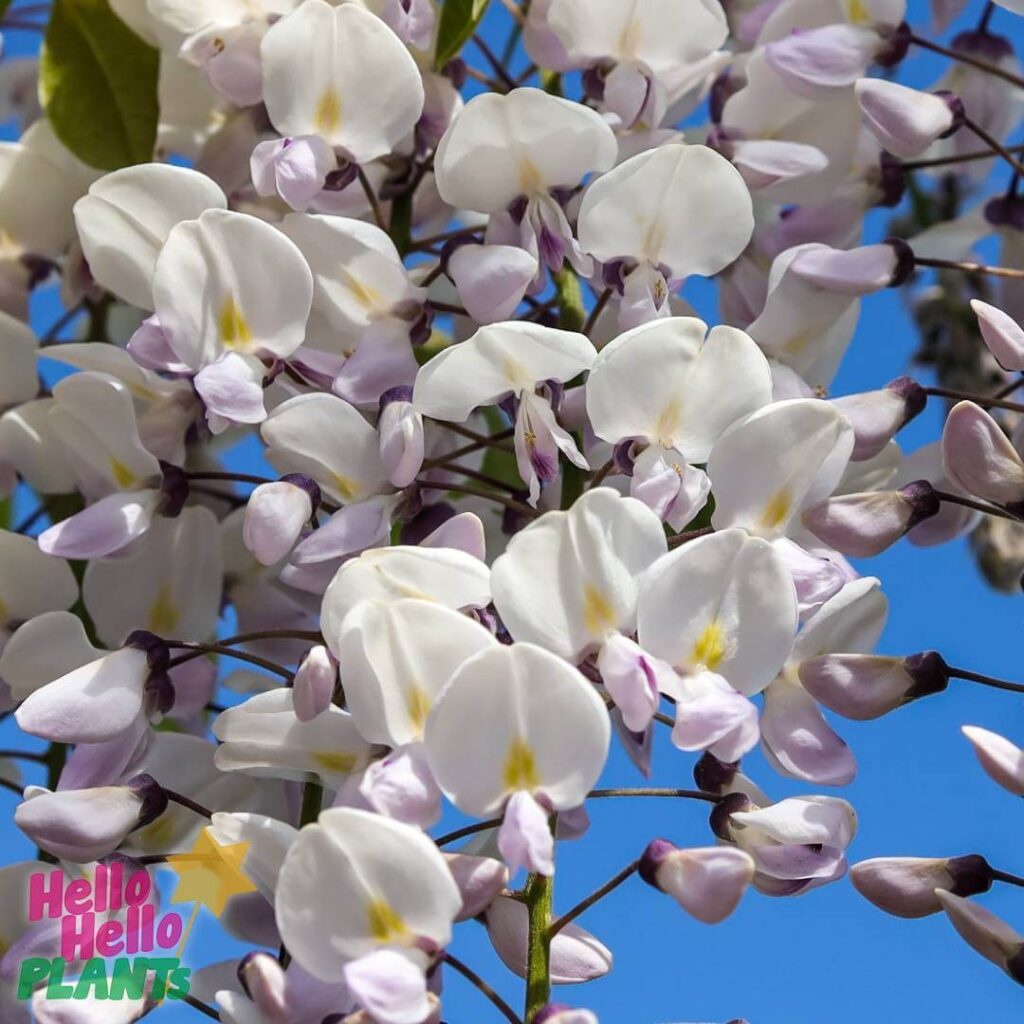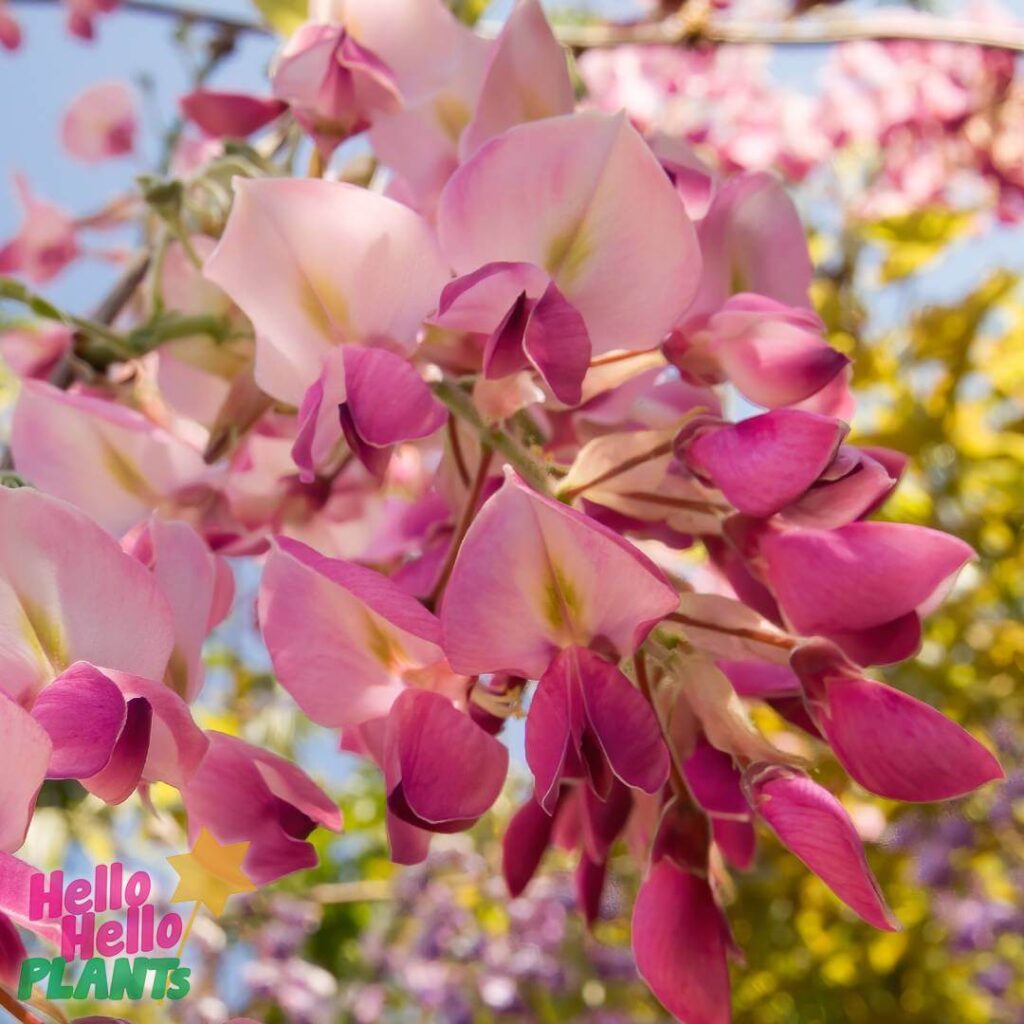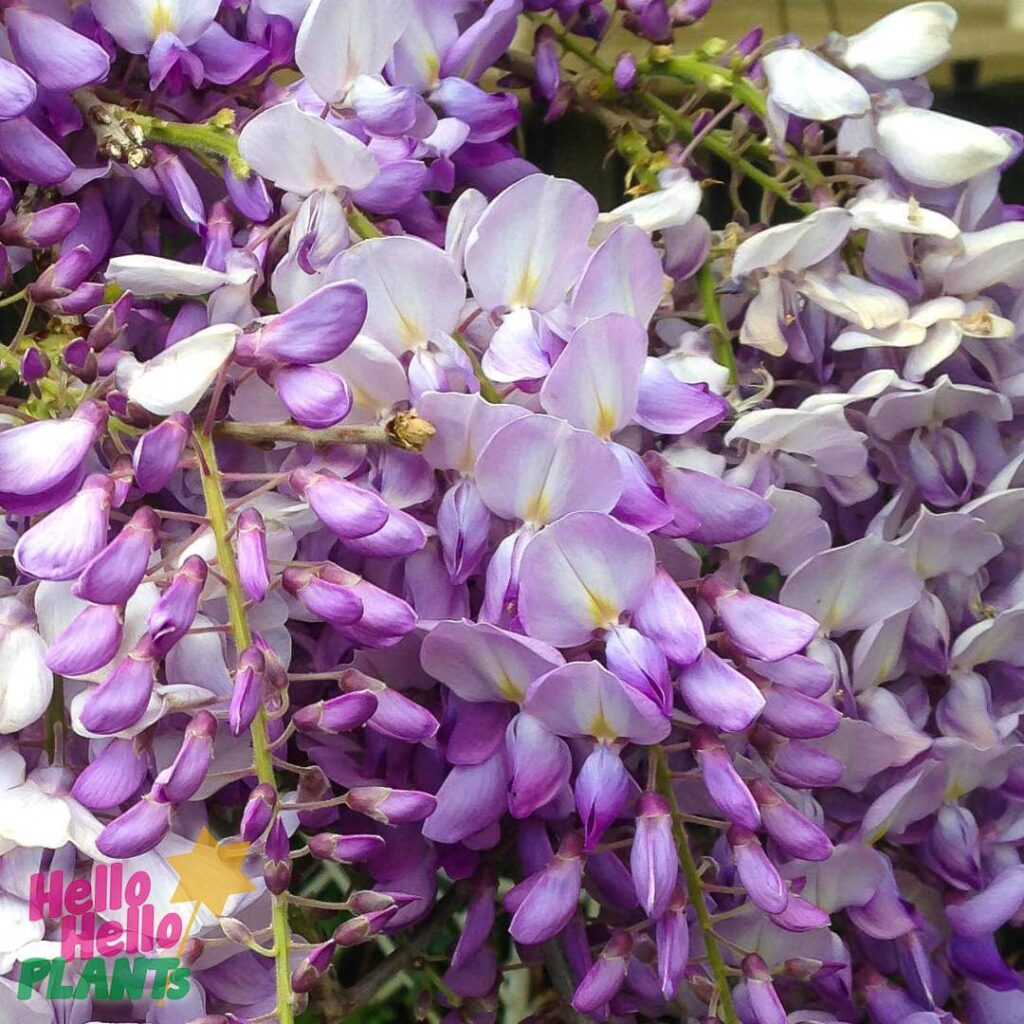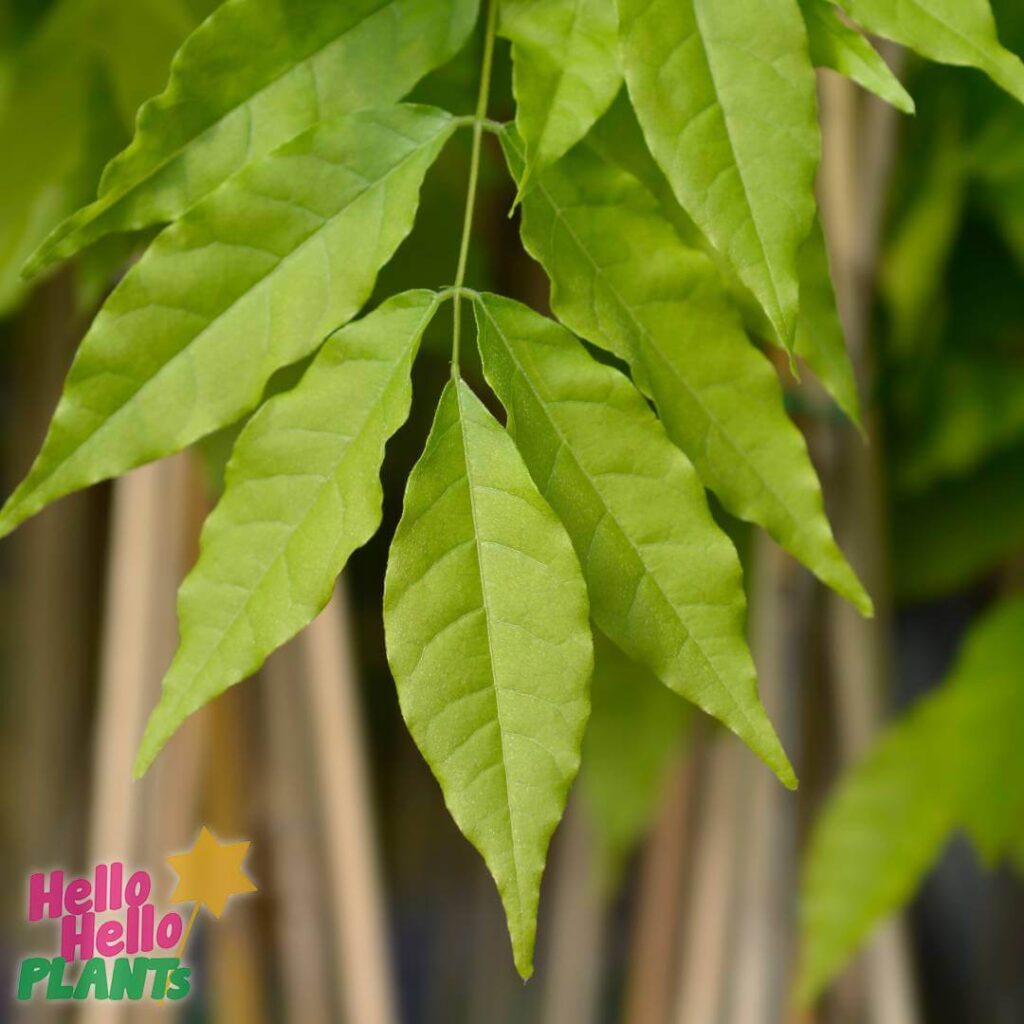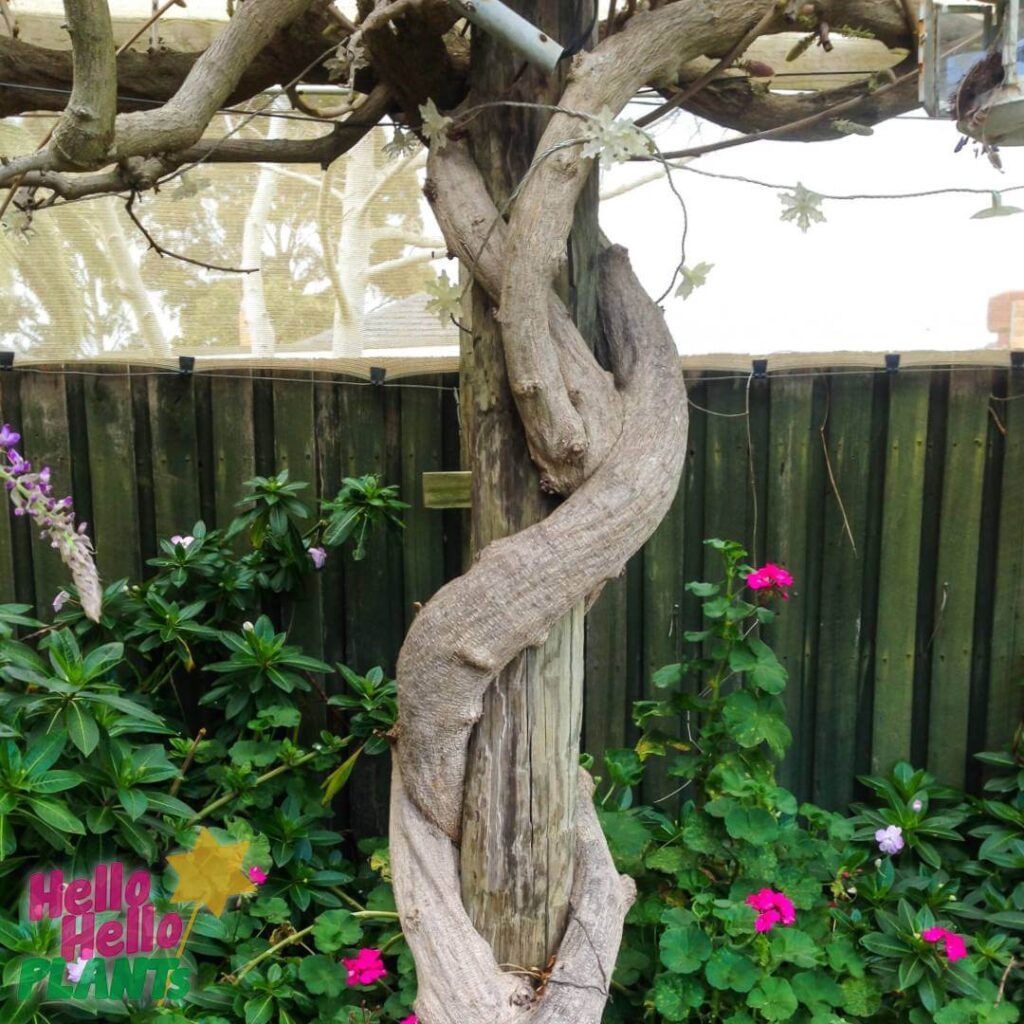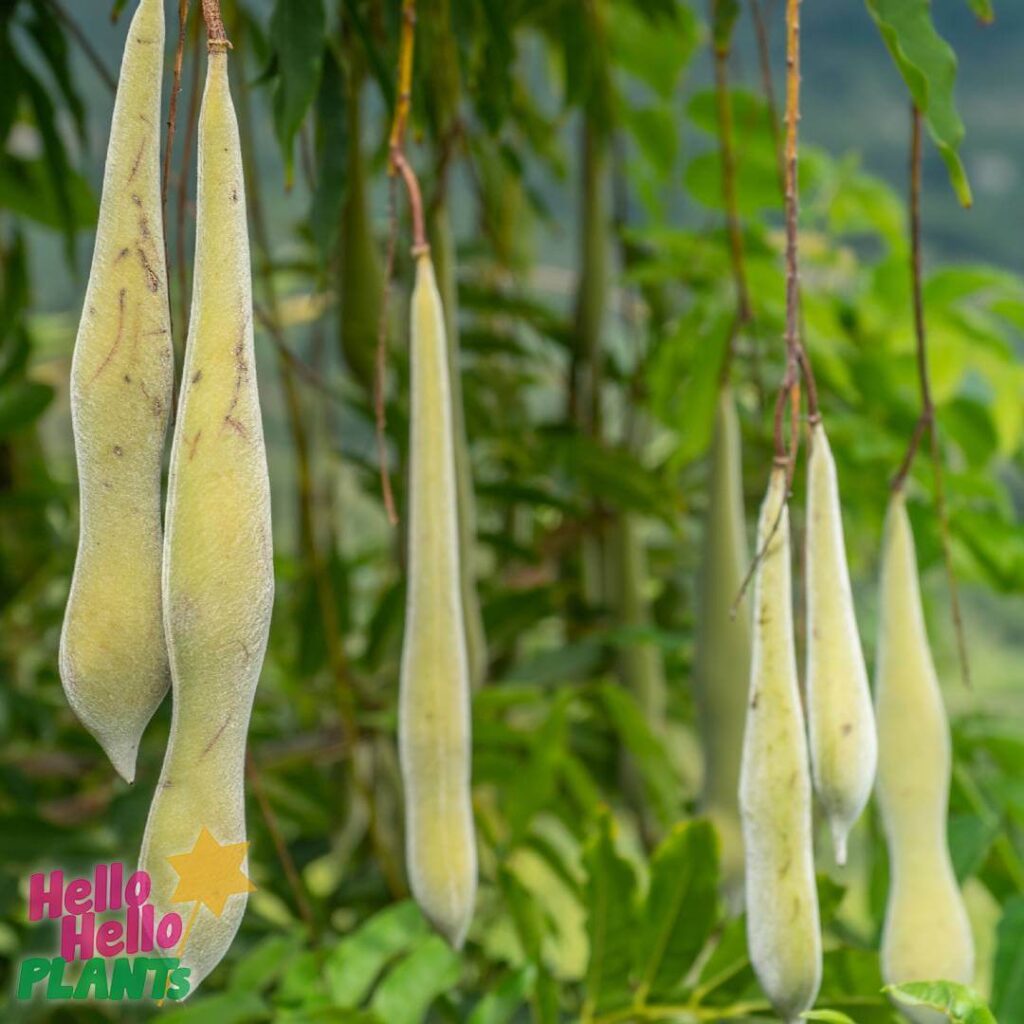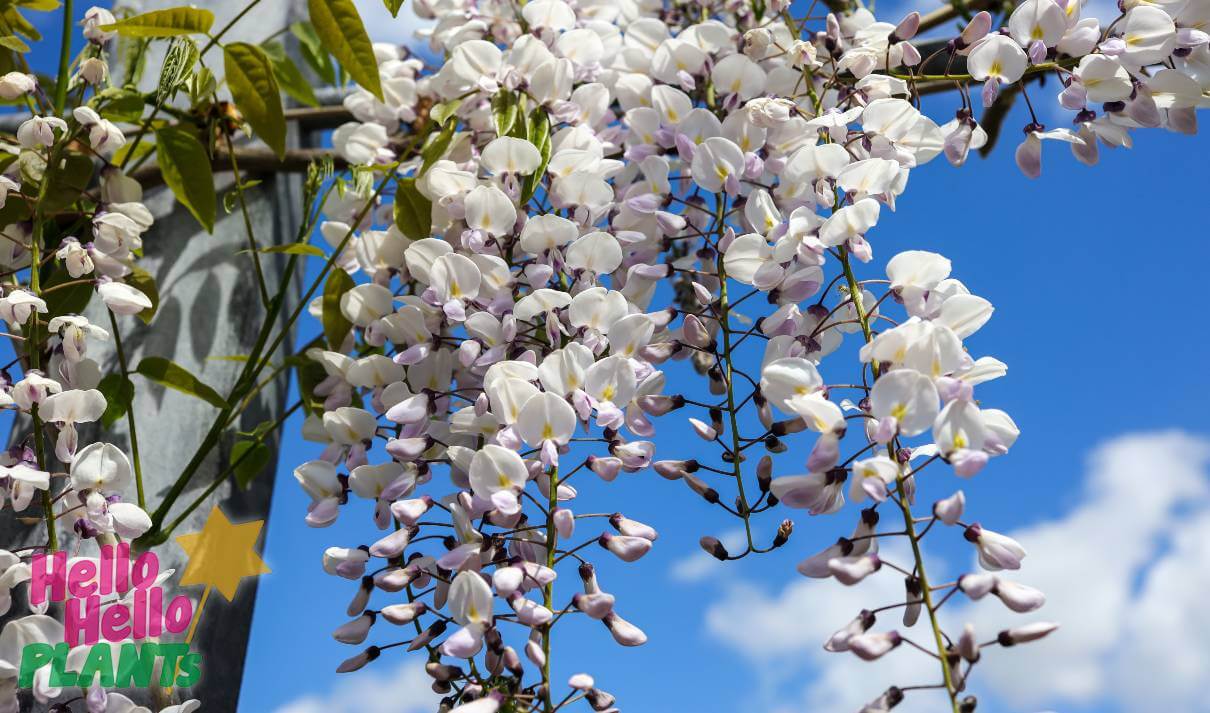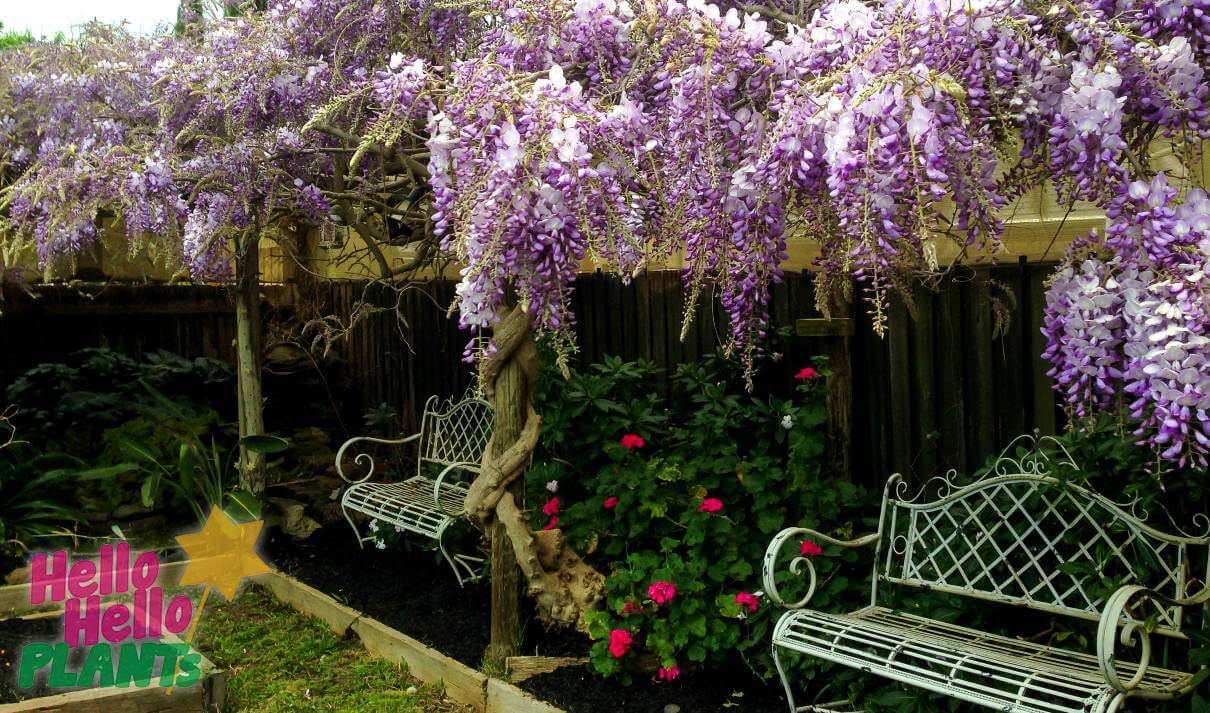Common Names: Chinese Kidney Bean, Silky Wisteria, Texas Wisteria, Chinese or Japanese Wisteria
Origin: Asia, USA
- Fast-growing vine
- Long, elegant fragrant flowers
- Feature archway or arbour
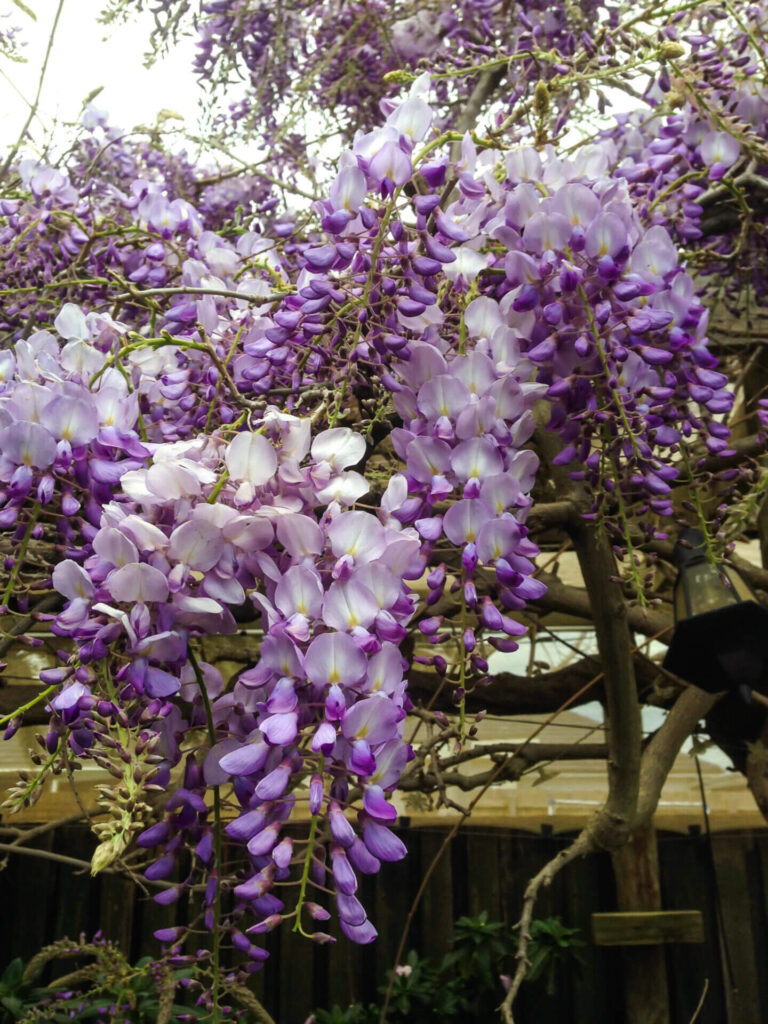
Wisteria are an all time favourite amongst our customers. Every year we sell out of these magnificent twisting floral vines, and there’s no wonder why. The flowers of the Wisteria vine are to die for! The long, racemes appear in early spring and come in colours of purple, pink and white. The sinensis variety will flower before any leaves appear, creating a gorgeous block of colour on the bare vines as you can see with Chris and his Wisteria in his backyard in the photo above.
These long, delicate flowers are highly fragrant, attracting bees, birds and butterflies and are one of the most elegant flowering vines we have ever seen. Wisteria are perfect for an arbour, pergola, archway or verandah provided they have a very strong frame to climb up. They can also be shaped into a gorgeous standardized tree, once again, providing there is framework for it to climb around and keep it strong. As this is a fast growing vine, they require a lot of winter pruning and shaping to keep them looking tidy.
There are many other plant varieties that can get confused with the Wisteria vine including Robina decaisneana ‘Pink Wisteria Tree’, Laburnum ‘Golden Chain Tree’ and Cassia fistula ‘Golden Shower’. It’s easy to see why as these varieties are members of the same plant family as Wisteria, the Fabaceae or ‘pea’ family. The members of this family all have the same shaped flowers, including the common bean or pea!
Plant Type: Vine
Uses: Feature Arch, Feature Pergola/Arbour
Garden Types: Pots & Containers, Cottage, Hampton, Japanese
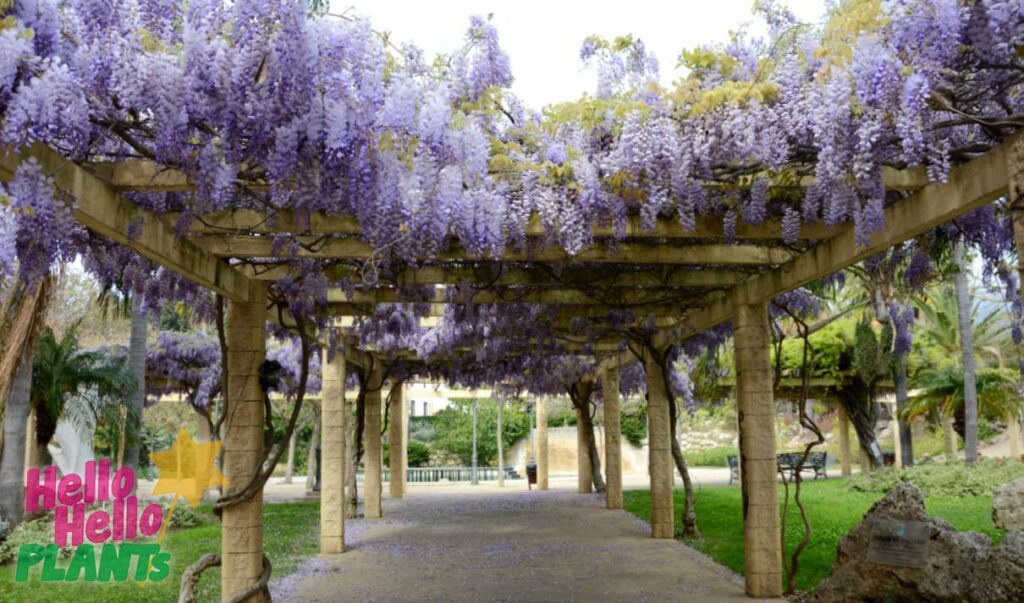
Sun Requirements: A full sun or part shade position, ideal for summer cover.
Water Requirements: Water regularly in the warmer months, particularly during flowering period. Once established they are drought-hardy. However Wisteria will bloom and leaf much more lusciously if watered regularly in summer.
Soil Requirements: Prefers moist, well-drained loamy soil. Will tolerate sandy and clay soils.
Fertilizing: During flowering and every 3 months in the warmer months with slow-release fertilizer.
Pruning: Late winter. When they are an advanced vine, they benefit from a hard prune. During the cooler months is the best time to reshape your vine and remove any sections that may be intruding in unwanted areas.
Tolerances: Drought, sun, poor soils, pollution, cold and frost.
Pests & Diseases: Powdery Mildew, though it’s not very frequent. Aphids, caterpillars, borers and scale insects. Animals tend to not eat Wisteria as it is toxic.
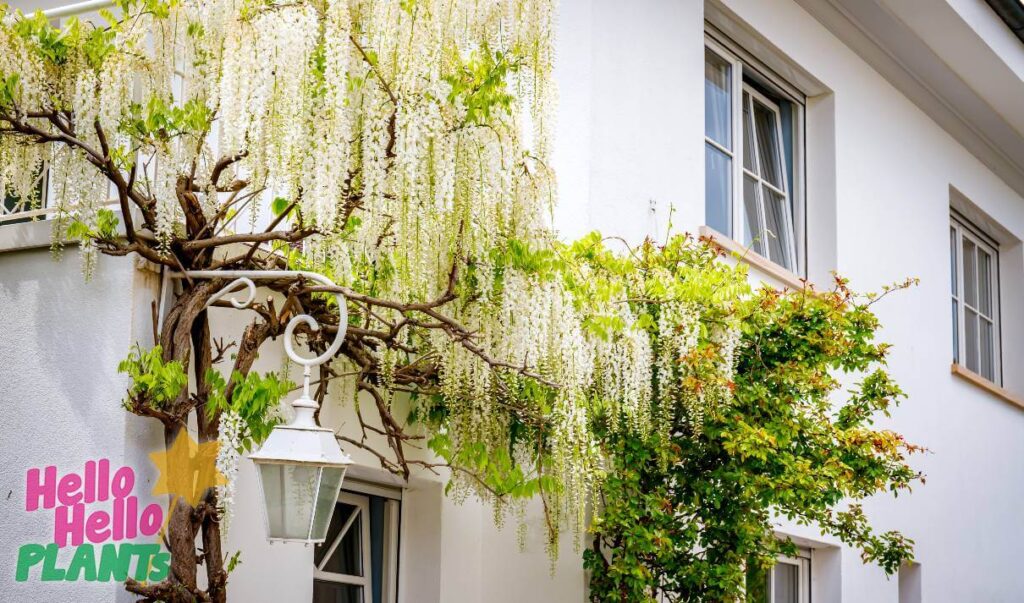
Flower: Long, hanging racemes with pea-like flowers. The floribunda or Japanese Wisteria are known to be some of the longest flowers, drooping from 90-120cm (the longest on some of the oldest plants). Sinensis or Chinese Wisteria flowers form on the bare vines, whereas other varieties form at the same time as the leaves.
Flowers are fragrant.
Foliage: Light or lime green, matte pinnate leaves that appear mid spring. They turn yellow in the autumn before they fall.
Trunk: The trunk is the vine, coiled around a post, which thickens as it grows. They become quite strong, covering the post over time
Fruit / Seeds: Appear after flowering on mature vines only, usually in late summer, autumn or even into winter depending on climate. Long, pods with seeds inside. Seeds are toxic, containing a saponin called wisterin.
Edible: No
Toxicity: All parts are toxic, in particular the seeds
Attracts: Birds, Bees, Butterflies
* Be mindful that Wisteria are very vigorous growers. It is recommended that you do not grow Wisteria on anything attached to a house unless you are willing and able to prune regularly (minimum once a yea). Wisteria have been known to invade rooves if left unmaintained.
Which Wisteria To Choose?
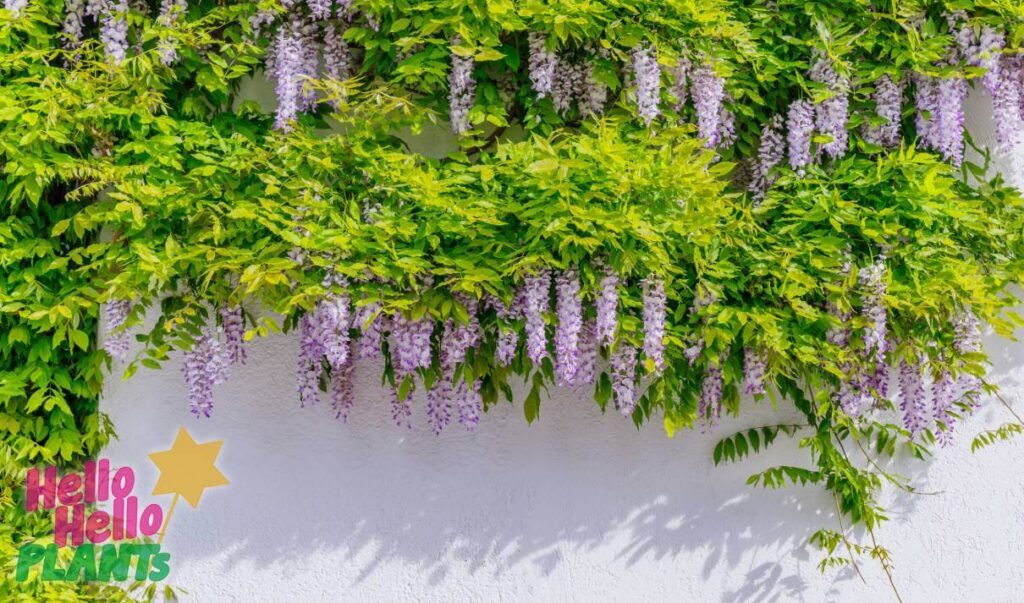
There are several varieties of Wisteria to choose from. Here’s a quick breakdown of each of these varieties.
Sinensis
The sinensis variety is the Chinese Wisteria. his variety comes in both white and purple and it’s significant difference to the other Wisterias is that it blooms on the bare vines, well before he leaves come in. It looks absolutely magnificent!
Floribunda
Japanese Wisteria, or floribunda, flower along with the leaves of the vine in late spring. Their flowers are much longer than the other varieties and come in purple, deep purple, pink, light pink and white.
Frutescens
Known as the American Wisteria, brachybotrys has shorter flowers than the other varieties. The flowers appear after the foliage in late spring early summer.
Brachybotrys
The second Japanese variety of Wisteria and often referred to as Silky Wisteria, this variety also has shorter and wider flowers than the other, more known Wisteria.
Still having trouble deciding which Wisteria is right for your job? Check out our quick comparison chart below!
| Genus | Colour | Flower Size (max) | Average Max. Size | |
|---|---|---|---|---|
| ‘Japanese White’ | floribunda | White | 60cm | 3-9m x 3-6m |
| ‘Longissima’ | floribunda | Blue Purple | 80cm-1m | 3-9m x 3-6m |
| ‘Rosea’ | floribunda | Pink | 60cm | 3-7m x 3m |
| ‘Royal Purple’ | floribunda | Purple with dark purple centre | 50cm | 3-9m x 3-6m |
| ‘Shiro Noda’ | floribunda | White | 60cm | 3-9m x 3-6m |
| ‘Violacea Plena’ | floribunda | Deep purple, double flower | 30cm | 3-9m x 3-6m |
| ‘Amethyst Falls’ | frutescens | Lilac purple | 15cm | 6m x 2.4m |
| ‘Chinese White’ | sinensis | White | 30cm | 3-9m x 3-6m |
| ‘Chinese Purple’ | sinensis | Purple | 30cm | 3-12m x 2-6m |
| ‘Shiro Kapitan’ | brachybotrys | White | 15cm | 3-12m x 2-6m |
| ‘Showa Beni’ | brachybotrys | Pink | 15cm | 3-12m x 2-6m |




